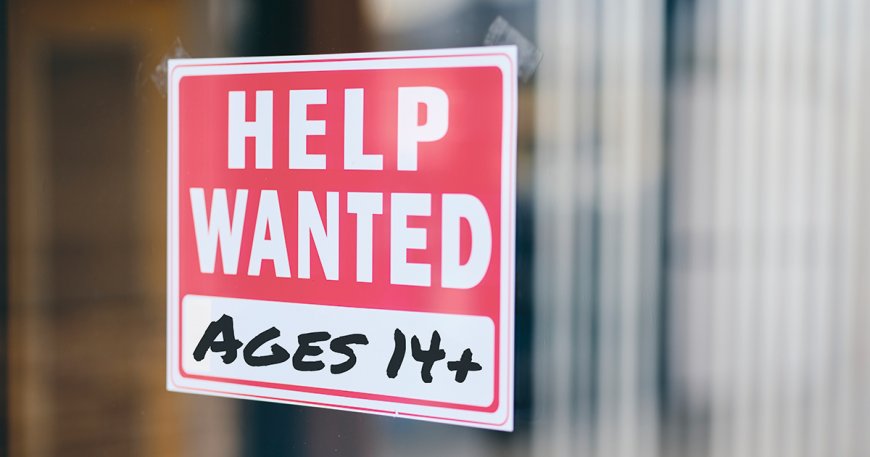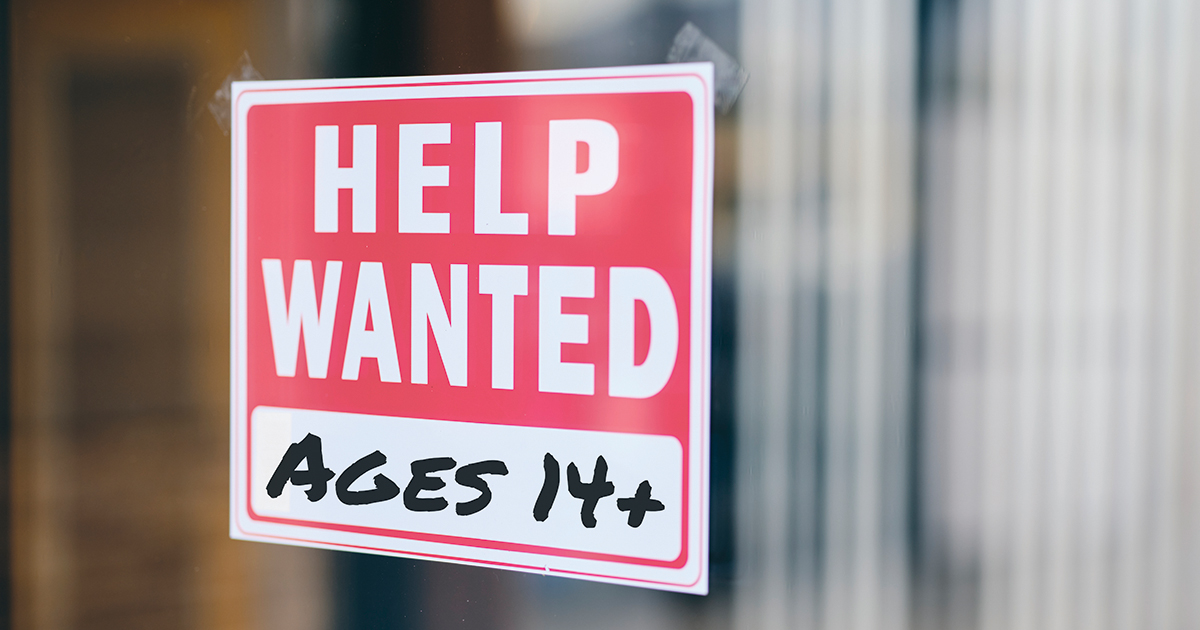Arkansas loosens and strengthens child labor laws amid national concerns – Talk Business & Politics
Arkansas loosens and strengthens child labor laws amid national concerns talkbusiness.net

Child Labor Laws in Arkansas: Loosened and Enhanced

Child labor laws are now simultaneously loosened and enhanced in Arkansas amid a rise in violations of the laws across the country and states looking to weaken them.
Rising Violations and Weakened Protections
According to the Economic Policy Institute, the number of children employed violating child labor laws in the United States rose by 37% from 2,819 in 2021 to 3,876 in 2022. Meanwhile, at least 14 states have considered or weakened child labor protections.
Arkansas Law Changes
Earlier this year, Arkansas received national media attention after state legislators approved a new state law that’s removed a more than 100-year-old requirement for 14- and 15-year-olds seeking employment. Later, a lesser-known law increased civil penalties and established felony charges for child labor law violators. Recently, area attorneys, a legal scholar and a child advocate provided advice on the changes.
The Youth Hiring Act (Act 195)
The Youth Hiring Act, or Act 195, took effect on July 31. The law removed the work permit requirement for 14- and 15-year-olds. Previously, state law required employers to receive a permit from the Arkansas Department of Labor and Licensing before the age group could start work in Arkansas.
- 2,227 permits were issued to employers over the past year
- 12,242 permits have been issued since 2016
These permits or certificates are assigned to employers, not employees. If an employee changed employers, the new employer would’ve been required to have its own permit for the employee.
National Attention and Violations
Between March 6 and 8, multiple national outlets, including Bloomberg, Newsweek and The Washington Post, reported on the Arkansas law change amid accounts of employers hiring children illegally. Reports show federal regulators discovered more than 100 children ages 13 to 17 were hired to clean meatpacking plants in eight states, including Arkansas. The employer paid a $1.5 million civil penalty. Citing the U.S. Department of Labor, Newsweek reported that employers violating child labor laws were assessed nearly $3.4 million in civil penalties in 2021.
Enhanced Penalties (Act 687)
On March 9, Senate Bill 390 was introduced to enhance civil penalties and create criminal penalties for those violating child labor laws in Arkansas. Sen. Clint Penzo, R-Springdale, and Rep. Rebecca Burkes, R-Springdale, were the sponsors. Penzo and Burkes also sponsored House Bill 1410, which became Act 195 on March 6. SB 390 became Act 687 on April 11. It also went into effect on July 31.
“Those who violate child labor laws and exploit minors need to be stopped,” Burkes said. “Increasing civil penalties and creating criminal penalties for violating child labor laws creates better tools to do this.”
Implications and Concerns
Added Risk
Katie Campbell, partner at Friday, Eldredge & Clark, said recent national media attention on loosening child labor laws in multiple states might lead to a short-term spotlight being placed on Arkansas employers.
- Increased attention from the federal Department of Labor
- Risk of audits and investigations
She said the new law only impacts 14- and 15-year-olds because the state prohibits those under 14 from working unless employed by a parent or guardian. Campbell noted that along with eliminating the work permit requirement, the state no longer must verify the age of the young workers.
Existing Laws and Restrictions
Campbell said existing federal and state child labor laws are still in effect, which might get lost in the headlines. Those under 16 can’t work in dangerous positions and are restricted on the times of day and the number of hours per week they can work.
- Restrictions on working in certain industries
- Prevention of exploitation and dangerous work
Campbell also highlighted the lesser-known Act 687 that increased penalties for child labor law violations to between $100 and $5,000 per violation, from between $50 and $1,000. Civil penalties can be assessed for violations looking back three years instead of two. Those knowingly violating child labor laws face misdemeanor charges, and repeat offenders could be charged with a felony.
Parental Consent
Tim Hutchinson Jr., partner at RMP LLP, said employers should still receive the parent’s signed, written consent for the employed child and keep this in the employee’s file. Parental consent was included in the work permit or certificate that’s no longer required because of Act 195.
Andrew Dixon, attorney at Quattlebaum, Grooms & Tull PLLC, said removing the work permit requirement will likely mean young employees can start work more quickly. Dixon also said employers should consider receiving parental consent and verifying employee age “to ensure they’re not hiring minors too young to work.”
Burkes said employers still must verify age because the federal I-9 form requires employees to show age verification documents.
108-Year-Old Law
Annie Smith, a law professor at the University of Arkansas, said the work permit requirement that Act 195 eliminated had been in place in Arkansas since 1915. Unlike the I-9, the work permit required parental consent, information to be submitted to the state agency enforcing child labor laws, and hours and types of work the employee will complete, said Smith, adding that the permit also provided employers with information on relevant laws and an opportunity to receive state feedback if a child labor violation was about to happen.
Enforcement Challenges
Arkansas Advocates for Children and Families has been against the bill that became Act 195 since February, when introduced during the legislative session.
Laura Kellams, the Northwest Arkansas director for the organization, said the work permit ensured parents knew their child was taking a job and the work hours restrictions. Without the permit requirement, she said the process to receive parental consent is no longer in place.
Smith explained the challenges to enforcing Act
SDGs, Targets, and Indicators Analysis
1. Which SDGs are addressed or connected to the issues highlighted in the article?
- SDG 8: Decent Work and Economic Growth
- SDG 16: Peace, Justice, and Strong Institutions
The issues highlighted in the article are connected to SDG 8, which focuses on promoting sustained, inclusive, and sustainable economic growth, full and productive employment, and decent work for all. The article discusses child labor laws and their impact on employment opportunities for young individuals.
The issues are also connected to SDG 16, which aims to promote peaceful and inclusive societies for sustainable development, provide access to justice for all, and build effective, accountable, and inclusive institutions at all levels. The article mentions the introduction of new laws and penalties to address child labor law violations.
2. What specific targets under those SDGs can be identified based on the article’s content?
- Target 8.7: Take immediate and effective measures to eradicate forced labor, end modern slavery and human trafficking, and secure the prohibition and elimination of the worst forms of child labor.
- Target 16.3: Promote the rule of law at the national and international levels and ensure equal access to justice for all.
The article highlights the rise in child labor law violations and the introduction of new laws and penalties to address these violations. These actions align with Target 8.7, which aims to eradicate forced labor, end modern slavery, and eliminate the worst forms of child labor.
The article also mentions the need for effective enforcement of child labor laws and the challenges faced by the Department of Labor and Licensing in proactive investigations. This relates to Target 16.3, which focuses on promoting the rule of law and ensuring equal access to justice for all.
3. Are there any indicators mentioned or implied in the article that can be used to measure progress towards the identified targets?
- Number of children employed violating child labor laws
- Number of states considering or weakening child labor protections
- Number of permits issued to employers
- Amount of civil penalties assessed for child labor law violations
- Number of misdemeanor and felony charges for child labor law violations
- Number of investigations and cases related to child labor violations
The article mentions several indicators that can be used to measure progress towards the identified targets. These indicators include the number of children employed in violation of child labor laws, the number of states considering or weakening child labor protections, the number of permits issued to employers, the amount of civil penalties assessed for child labor law violations, and the number of misdemeanor and felony charges for child labor law violations. Additionally, the article highlights the challenges faced by the Department of Labor and Licensing in conducting proactive investigations, indicating a need for improved investigation resources and reporting mechanisms.
Table: SDGs, Targets, and Indicators
| SDGs | Targets | Indicators |
|---|---|---|
| SDG 8: Decent Work and Economic Growth | Target 8.7: Take immediate and effective measures to eradicate forced labor, end modern slavery and human trafficking, and secure the prohibition and elimination of the worst forms of child labor. |
|
| SDG 16: Peace, Justice, and Strong Institutions | Target 16.3: Promote the rule of law at the national and international levels and ensure equal access to justice for all. |
|
Behold! This splendid article springs forth from the wellspring of knowledge, shaped by a wondrous proprietary AI technology that delved into a vast ocean of data, illuminating the path towards the Sustainable Development Goals. Remember that all rights are reserved by SDG Investors LLC, empowering us to champion progress together.
Source: talkbusiness.net

Join us, as fellow seekers of change, on a transformative journey at https://sdgtalks.ai/welcome, where you can become a member and actively contribute to shaping a brighter future.







